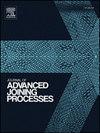Determination of heat input impact on residual stress, microstructure and mechanical characteristics of welded ferrite-pearlite (α-P) steel joints by using taguchi optimization approach
IF 4
Q2 MATERIALS SCIENCE, MULTIDISCIPLINARY
引用次数: 0
Abstract
Ferrite-Pearlite (α-P) steels like E350 steel were extensively used in pre-engineered structures like industrial warehouses, bridges, etc., owing to their special ductility property. Submerged arc welding is highly efficient in welding long-span prefabricated structures. In this paper, weld overlay and butt weld experimental investigations were performed to optimise the welding process by understanding the influence of heat input on residual stress generation, weld efficiency, microstructural and mechanical characteristics of the weld joint to match the filler wire with the base material characteristics. Trail runs were conducted using the Taguchi design optimisation approach. Taguchi method is useful to standardise and simplify the use of design of experiments. The weld quality was evaluated using non-destructive evaluations. Residual stress was tensile near the weld and transitioned to compressive further from the root. The intensity of residual stress decreased gradually with an increase in transverse distance from the weld root. Acicular ferrite, polygonal ferrite, and traces of lath bainite microstructure were observed in the weld zone. The weld microstructure became coarser toward the melting boundary of the welded joint with an increase in heat input greater than 1.09 kJ/mm. A notable decrease in weld brittleness was observed with an increase in heat input from 1.09–1.37 kJ/mm, and the fracture initiated away from the weld with ductile and quasi-ductile cleavages. The overall microstructure and mechanical characteristics of the welded joint were improved at a controlled heat input of 1.09–1.37 kJ/mm.
采用田口优化方法确定热输入对铁素体-珠光体(α-P)钢焊接接头残余应力、组织和力学特性的影响
铁素体-珠光体(α-P)钢,如E350钢,由于其特殊的延展性,被广泛应用于工业仓库、桥梁等预制结构。埋弧焊是焊接大跨度装配式结构的一种高效方法。通过了解热输入对焊接接头残余应力产生、焊接效率、显微组织和力学特性的影响,优化焊接工艺,使填充焊丝与母材特性相匹配。试验采用田口设计优化方法进行。田口法有助于规范和简化实验设计的使用。采用无损评价法对焊缝质量进行了评价。残余应力在焊缝附近为拉伸应力,在根部附近进一步向压缩应力过渡。随着距焊缝根部横向距离的增加,残余应力强度逐渐减小。焊缝区出现针状铁素体、多边形铁素体和板条贝氏体组织。当热输入增大大于1.09 kJ/mm时,焊缝组织向焊缝熔化边界方向变粗。当热输入量从1.09 ~ 1.37 kJ/mm增加时,焊缝脆性显著降低,断口开始于远离焊缝的地方,呈延性和准延性解理。当热输入控制在1.09 ~ 1.37 kJ/mm时,焊接接头的整体组织和力学特性得到改善。
本文章由计算机程序翻译,如有差异,请以英文原文为准。
求助全文
约1分钟内获得全文
求助全文

 求助内容:
求助内容: 应助结果提醒方式:
应助结果提醒方式:


